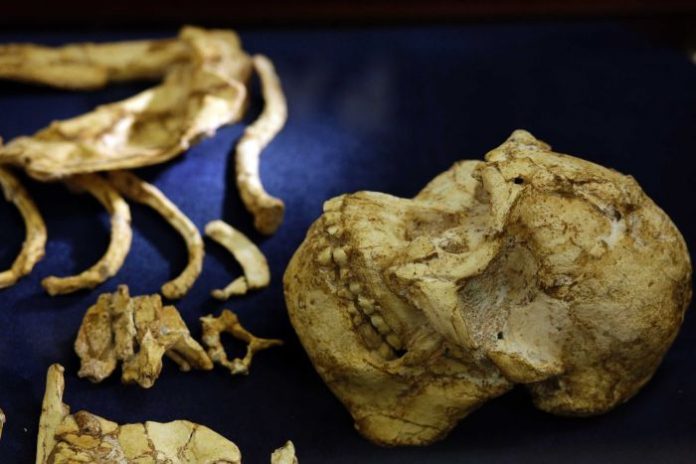Archaeologists have found many, many examples of ancient human ancestors over the past few centuries, and while most of the time the skeletal remains are at least identifiable, they’re rarely complete.
A team spent more than 20 years excavating, cleaning and putting together the skeleton of Little Foot.
According to their results, Little Foot died 3.67 million years ago, making him an older relative of the equally famous skeleton “Lucy.” If this date holds up, it could mean that Little Foot is an ancestor of the human lineage, which is exciting. The findings have been published in the journal Nature.
Little Foot, a member of the Australopithecus genus, was unearthed 21 years ago in a cave at Sterkfontein, South Africa. Alongside this nearly complete skeleton, the cave was found to contain one of the biggest collections of Australopithecus fossils in the entire world. In a different section to Little Foot, paleontologists also discovered an assemblage of early stone tools, which are thought to be some of the oldest known from South Africa.
While there is no doubt that the site is millions of years old, the precise age of the specimens has been contentious. Dating techniques produced wildly different ages for Little Foot, ranging between 2 to 4 million years old. Although many agreed with an estimate of 3 million years, scientists were keen to attempt to place a more accurate date on the skeleton using a technique called isochron burial dating.
This method involves measuring the ratios of different forms, or isotopes, of the elements aluminum and beryllium in the rocks surrounding the fossil. The isotopes –aluminium-26 and beryllium-10– are only created when rocks are exposed to cosmic rays. When the rock goes underground, the atoms begin to decay at a known rate, which is assumed to be constant. By looking at the ratios of these isotopes, scientists can therefore estimate how long a sample has been buried for.
According to their measurements, Little Foot is 3.67 million years old, and the stone tools found in the same cave are 2.18 million years old. That significantly pushes back the previously proposed date for tool-bearing hominids in this part of Africa, the researchers say.
Alongside providing a new date for the specimens, the scientists also argue that Little Foot represents a new species of Australopithecus, called A. Prometheus, which is quite different to A. afarensis, a contemporary relative. However, this assertion has attracted criticism as some researchers believe Little Foot could be an example of A. africanus, a species which is not thought to be an ancestor of humans. Scientists are still conducting detailed analyses of the skeleton, which should hopefully offer some further clarity on this issue.















